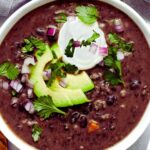Is Spanish rice gluten-free? This tasty dish has faced this question every time a person with gluten issues wants to have some. I had to learn it the hard way as my younger sister has celiac disease. For her, I have mastered the art of cooking some delicious gluten-free Spanish rice dishes over the years that put a smile on her face every time.
Spanish rice can be tasty, colorful, full of flavor, and especially healthy if cooked right. It’s a rice pilaf side dish, with southwestern flavorings. but, Is Spanish rice gluten-free? The answer is yes! The tasty side Spanish rice is gluten-free, so there are no worries for people with gluten issues.
Today, I will cover every one of your confusions regarding Spanish rice. What items I had gotten, what I needed to make it, and how I finally made it work. You’ll also get a glimpse of gluten-free Spanish Rice recipe. For that, ‘ll also provide you with the steps and instructions for making the best gluten-free Spanish rice you’ve ever tasted.
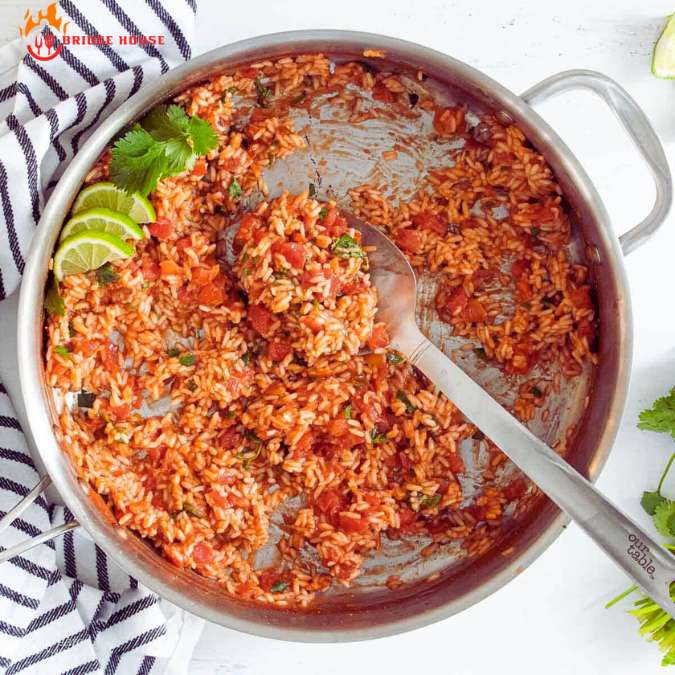
Is Spanish Rice Really Gluten-Free?
Most times, yes! Spanish rice does not have gluten. Spanish rice is made with rice, of course! Rice does not have gluten, so it’s safe for people who cannot eat gluten.
The other ingredients in Spanish rice are also gluten-free. Veggies like tomatoes, onions, and peppers have no gluten. Spices like cumin and chili powder are gluten-free as well.
Some gluten-free Spanish rice brands are:
- Natural Heaven
- Skratch Labs
- Lundberg
- Judee’s Gluten-Free
- Andy’s
- RightRice
- Vigo
- Dream Blends
But watch out! Some Spanish rice brands may add flour or breadcrumbs. These have gluten, so the dish is not gluten-free. Don’t just read the ingredients list, use your detective skills!
- Look for any signs of wheat, barley, or rye.
- Check if it was made in a factory with other gluten-added foods.
- When in doubt, give the company a shout!
What is Gluten and Who Needs to Avoid It?
First things first. Let’s take a look at what gluten is, and who needs to avoid it. Gluten can be poisonous for people with gluten sensitivities. So, get your facts right!
What is Gluten?
Gluten is a protein found in wheat, barley, rye, and triticale (a cross between wheat and rye). It acts as a binding agent, giving elasticity and chewiness to baked goods like bread, pasta, and cereals. Gluten is found in many processed foods like sauces, salad dressings, and some candies and vitamins.
Who Needs to Avoid Gluten?
- People with Celiac Disease
- Celiac disease is an autoimmune disorder where the body’s immune system attacks the small intestine when gluten is consumed.
- Even small amounts of gluten can cause damage, leading to malnutrition, anemia, and other complications.
- A strict, lifelong gluten-free diet is the only treatment for celiac disease.
- People with Non-Celiac Gluten Sensitivity (NCGS)
- NCGS is a condition where gluten consumption causes symptoms like celiac disease. It just doesn’t do the same intestinal damage.
- Symptoms may include bloating, abdominal pain, diarrhea, fatigue, and headaches.
- Avoiding gluten can reduce these symptoms.
- People with Wheat Allergy
- A wheat allergy is an immune system response to proteins found in wheat, including gluten.
- Symptoms can range from mild (rash, nausea) to severe (anaphylaxis).
- Strict avoidance of wheat and gluten-containing products is necessary.
Gluten-Free Cooking
Gluten-free cooking is a way of preparing food without using ingredients that contain gluten. It might seem challenging at first, but it gets easier with a little practice and knowledge. Here are some aspects of gluten-free cooking:
The Importance of gluten-free cooking
- It allows those with celiac disease or gluten intolerance to enjoy a wide variety of foods safely.
- It prevents painful symptoms like bloating, diarrhea, and stomach cramps.
- It helps people with gluten issues get the necessary nutrients to stay healthy.
Benefits of Gluten-Free Cooking
- Improved digestion and relief from uncomfortable symptoms.
- Reduced inflammation in the body.
- Increased energy levels and better overall well-being.
- Opportunity to explore new ingredients and flavors.
How-Tos of Gluten-Free Cooking
- Read ingredient labels carefully and avoid anything with wheat, barley, or rye.
- Use gluten-free flour like rice, almond, or coconut flour for baking.
- Experiment with gluten-free grains like quinoa, amaranth, and buckwheat.
- Choose gluten-free condiments, sauces, and dressings.
- When dining out, communicate your dietary needs to the staff.
- Keep a well-stocked gluten-free pantry with safe ingredients.
- Get creative and have fun trying new recipes and flavor combinations.
How to make Gluten Free Spanish Rice
Here is a guide with everything you need for the gluten-free Spanish rice recipe:
Necessary Equipment
Kitchen Essentials
- Cutting Board
- Sharp Knife
- Wooden spoon or spatula
- Can opener (if using canned tomatoes)
Pots and Pans
- Large saucepan or pot with lid
- Skillet or saute pan (for sauteing vegetables)
Measuring Tools
- Measuring cups (for rice and liquids)
- Measuring spoons (for spices and seasonings)
Other Useful Equipment
- Garlic press or garlic mincer
- Citrus juicer or reamer (if using fresh lime/lemon juice)
- Fine mesh strainer (for rinsing rice)
- Mixing bowls (for prepping ingredients)
- Airtight storage containers (for leftovers)
Optional but Handy
- Rice cooker (for cooking rice separately)
- Immersion blender or regular blender (for pureeing tomatoes, if desired)
- Mortar and pestle (for grinding whole spices)
It’s essential to ensure all equipment and surfaces are thoroughly cleaned. This way you can avoid cross-contamination with gluten-containing ingredients.
Required Ingredients
Rice
- 1 cup long-grain white rice (or brown rice for a healthier option)
- I prefer using long-grain white rice as it has a nice fluffy texture when cooked.
Aromatics
- 1 small onion, diced
- 3-4 cloves garlic, minced
- 1 jalapeno or serrano pepper, seeded and minced (optional for heat)
- Using fresh garlic amps up the flavor of this dish.
Tomatoes
- 1 (14.5 oz) can diced tomatoes with their juices
- Or, 2-3 fresh tomatoes, diced
- I love using fresh, ripe tomatoes when in season for their bright, tangy taste.
Broth/Stock
- 1 and ½ cups gluten-free chicken or vegetable broth/stock
- Chicken broth gives it a richer, more savory flavor than vegetable broth.
Seasonings
- 1 teaspoon ground cumin
- 1 teaspoon paprika (smoked or regular)
- ½ teaspoon dried oregano
- Salt and black pepper to taste
- Smoke paprika adds a nice smoky depth of flavor.
Extras
- 2 tablespoons tomato paste (for richer tomato flavor)
- Tomato paste goes a long way in intensifying the tomato taste
- 1-2 tablespoons fresh cilantro or parsley, chopped (optional garnish)
- Fresh cilantro gives it an authentic Mexican flair.
- Lime wedges (for serving)
- A squeeze of lime juice brightens up all the flavors.
Oils/Fats
- 2 tablespoons olive oil or avocado oil (for sauteing)
- Or, 2 tablespoons butter or ghee (for richer flavor)
- Using butter or ghee makes it taste extra luxurious
Make sure to check all ingredient labels carefully to ensure they are certified gluten-free. Especially for items like broth, tomato paste, and spice blends.
Instructions
Step 1: Rinse the Rice
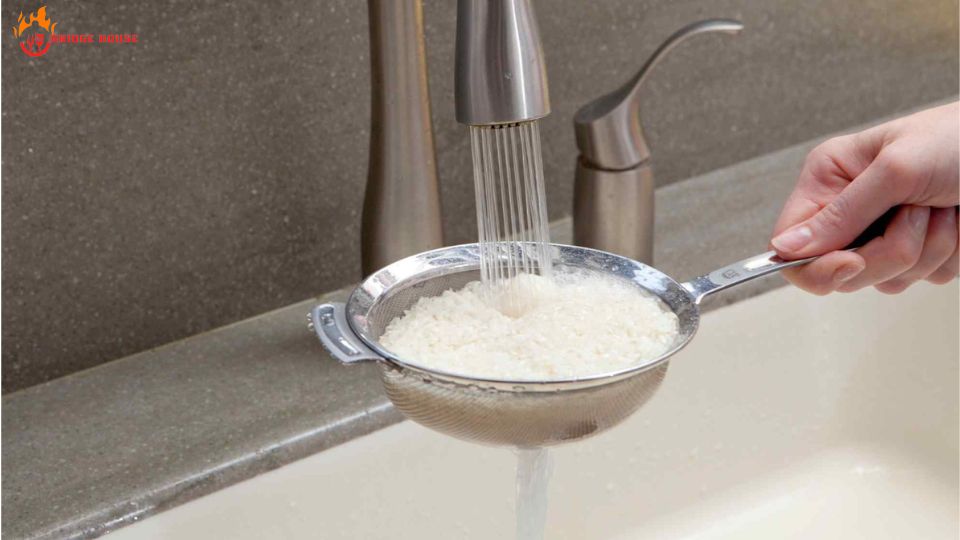
Measure 1 cup of long-grain white or brown rice. Place it in a fine mesh strainer and rinse under cool running water until the water runs clear. This helps remove excess starch for better texture.
Step 2: Saute the Aromatics

Heat 2 tablespoons of olive oil or butter in a large saucepan over medium heat. Add the diced onion and minced garlic. Saute for 2-3 minutes until fragrant. If you’re using jalapeno or serrano pepper, add it now and cook for another minute.
Step 3: Toast the Rice
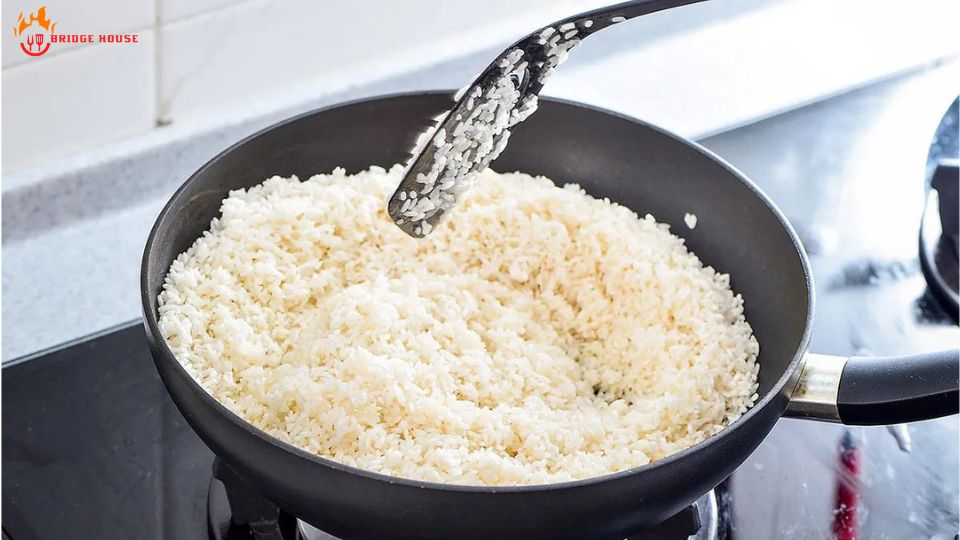
Add the rinsed rice to the saucepan and stir to coat with the oil/butter mixture. Cook for 2-3 minutes, stirring frequently, until the rice is lightly toasted and opaque.
Step 4: Add Tomatoes and Seasonings

Pour in the can of diced tomatoes with their juices (or fresh diced tomatoes). Stir in the cumin, paprika, oregano, salt, and black pepper to taste. If you’re using tomato paste, add it now and stir to combine.
Step 5: Pour in the Broth
Carefully pour in 1 ½ cups of gluten-free chicken or vegetable broth. Give everything a good stir to incorporate the broth.
Step 6: Bring to a Boil and Simmer
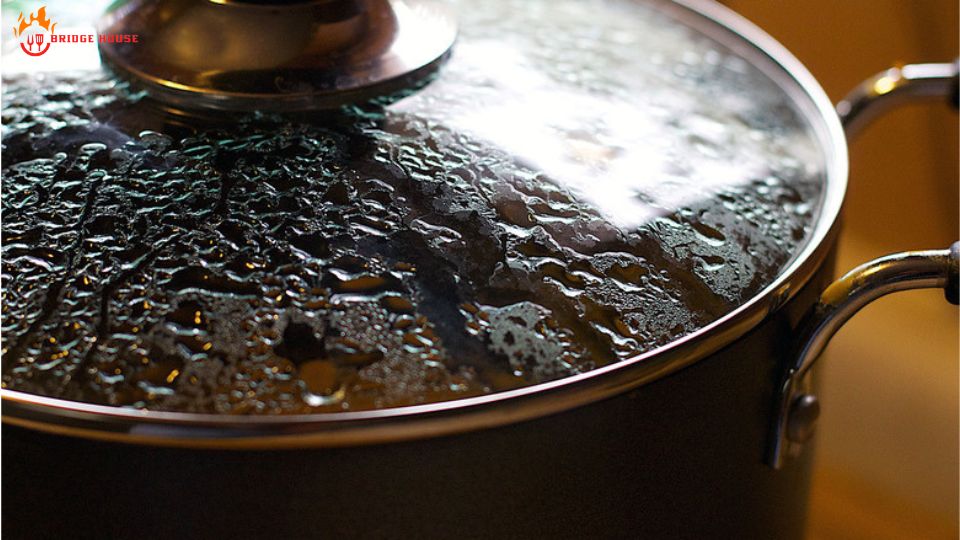
Increase the heat to high and bring the mixture to a boil. Once boiling, reduce heat to low, cover the pot with a lid, and simmer for 20-25 minutes. Resist the urge to lift the lid as this releases steam and affects cooking.
Step 7: Let it Rest
After 20-25 minutes, remove the pot from the heat and let it rest, covered, for 5-10 minutes. This allows the rice to finish cooking and absorb any remaining liquid.
Step 8: Fluff and Garnish
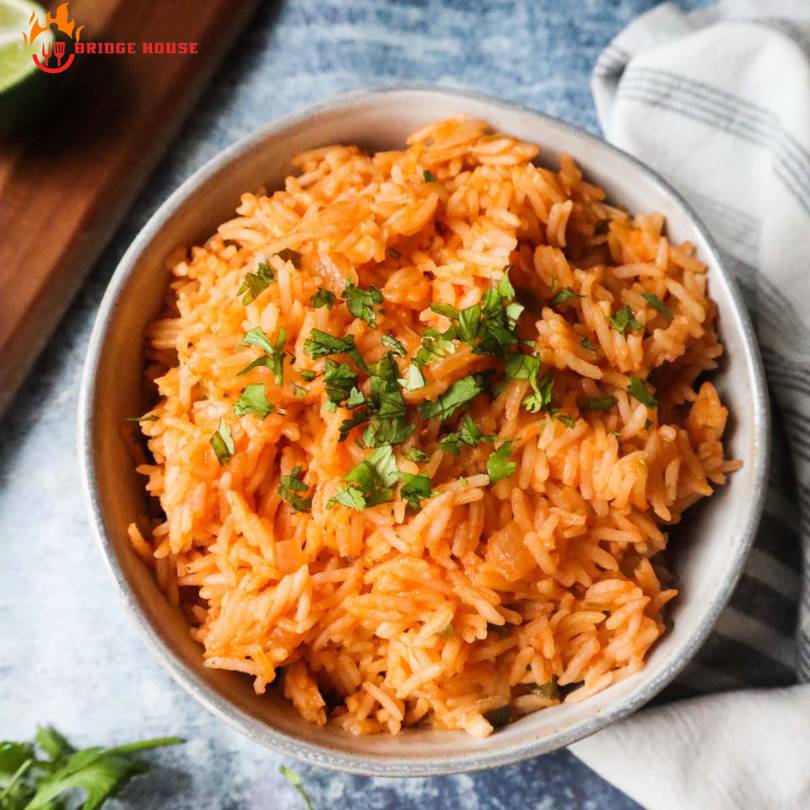
Uncover the pot and fluff the rice with a fork to break up any clumps. Garnish with freshly chopped cilantro or parsley, if desired. Serve hot with lime wedges on the side for squeezing over the top.
Gluten-Free Spanish Rice Variations and Add-Ins
Vegetarian Spanish Rice
Equipment
- Large pot or dutch oven (I prefer enameled cast iron for even heat distribution)
- Wooden spoon
- Sharp knife and cutting board
Ingredients
- Olive oil or avocado oil (I like to use high-quality Spanish olive oil for maximum flavor)
- 1 onion, diced
- 3 cloves garlic, minced
- 1 red bell pepper, diced
- 2 cups Bomba or Calasparra rice (These short-grain Spanish rice develop the perfect al dente bite)
- 1 tsp smoked paprika
- ½ tsp saffron threads
- 4 cups vegetable or mushroom broth
- 1 cup frozen peas
- Salt and pepper to taste
- Chopped parsley for garnish
Instructions
Step 1: Heat oil in the pot over medium heat. Saute onions and garlic until translucent.
Step 2: Add bell pepper and rice, stirring to coat with oil. Toast rice for 2-3 minutes.
Step 3: Stir in paprika, saffron, and broth. Bring to a boil.
Step 4: Reduce heat to low, cover, and simmer for 20 minutes.
Step 5: Remove the heat. Let stand covered for 5 more minutes.
Step 6: Stir in peas. Season with salt and pepper. Garnish with parsley.
Spanish Rice with Protein
Same equipment and ingredients as Vegetarian Spanish Rice, plus – 1 lb chicken, shrimp, or firm tofu, cooked.
- Stir in cooked protein after simmering the rice.
Cheesy Spanish Rice
Same equipment and ingredients as Vegetarian Spanish Rice, plus – 1 cup shredded cheddar or Monterey jack cheese.
- Top finished rice with shredded cheese and cover for 2-3 minutes to melt before serving.
Spicy Spanish Rice
Same equipment and ingredients as Vegetarian Spanish Rice, plus – 1-2 jalapenos, diced or ¼ tsp cayenne.
- Add jalapenos or cayenne along with spices for a kick of heat. I like to use smoky chipotle powder too.
How Spanish Rice Becomes a Gluten-Added Dish
Spanish rice is gluten-free. But adding, using, or mixing with certain ingredients may make it a gluten-added dish. For instance,
- Wheat Flour or Breadcrumbs: Avoid using wheat flour or breadcrumbs as a thickener, as they are sources of gluten.
- Gluten-Containing Broth or Stock: Refrain from adding gluten-containing broth or stock.
- Seasoning Mixes or Blends with Gluten: Do not use seasoning mixes or blends with gluten.
- Cross-Contamination: Cross-contamination during preparing, cooking, or serving can make your dish a gluten-added one.
- Gluten-Containing Ingredients: Be careful of adding gluten-containing ingredients for flavor.
- Gluten-Containing Toppings: Using gluten-containing garnishes or toppings will ruin your gluten-free dish.
Ordering Spanish Rice at Restaurants
For gluten-sensitive people, consider the following aspects while you order Spanish rice at restaurants.
Communicate with the Staff
Clearly communicate your gluten intolerance or sensitivity to the server or chef. Ask specific questions about the ingredients and preparation methods used in their Spanish rice dish.
Cross Contamination Concerns
Find out if the Spanish rice is prepared in a shared kitchen area or with utensils that may have come into contact with gluten. Request that the dish be prepared with fresh, clean utensils and cookware to avoid cross-contamination.
Seasoning Mixes, Broth, and Toppings
Be cautious of restaurants using pre-made seasoning mixes or broth cubes in their Spanish rice. Request the dish be served without toppings that contain gluten-added ingredients.
Trust Your Instincts
If the server or chef seems unsure or unable to provide clear answers, it may be safer to avoid ordering it.
Final Thoughts
Spanish rice is a healthy and delicious meal. Nobody should have to avoid it because of gluten intolerance or sensitivity.
The recipes I’ve mentioned are safe for you if you’re gluten intolerant. I handpick the ingredients to make sure the dish is gluten-free. So you can choose my original recipe or try the variations I’ve mentioned without having to worry about gluten.
So, is Spanish rice gluten-free? The answer is yes. Follow the tips, cautions, and steps of my recipe to enjoy tasty Spanish rice gluten-free, without having to worry about gluten at all.
FAQs About Gluten-Free Spanish Rice
What rice is best for celiacs?
For celiacs, the best rice varieties are – Bomba rice, Calasparra rice, and Arborio rice. The short, almost round grains of these kinds of rice allow them to really absorb liquid and aromatics. And it still maintains a desirable chewy, separated texture.
Does soy sauce have gluten?
Yes, regular soy sauce contains gluten from wheat. Most traditional soy sauces are made by fermenting a mixture of soybeans, wheat, salt, and mold cultures. Wheat is what provides the gluten. Look for gluten-free alternatives like those labeled “gluten-free” or “tamari”, a wheat-free Japanese-style soy sauce.
Does beans have gluten?
No, beans are naturally gluten-free. Beans are legumes that come from plants that are completely unrelated to gluten-containing grains. So, as long as beans are plain and not cross-contaminated with gluten during processing or preparation, they are safe for a gluten-free diet.
Is Zatarain’s Spanish Rice gluten-free?
Yes, Zatarain’s Spanish Rice is gluten-free, according to the label on the product package. However, it’s not certified to be gluten-free and it’s not manufactured in a gluten-free factory. So chances of cross-contamination are there.
Which rice flour is gluten-free?
Some of the most common rice flours that are gluten-free are – White Rice Flour, Brown Rice Flour, and Sweet Rice Flour. Rice flour blends that also include other gluten-free flour like potato starch, tapioca, corn, etc. can provide better binding and rise for gluten-free baking as well.
Is flavored rice gluten-free?
It depends on the specific ingredients and seasonings used. Plain rice itself is naturally gluten-free. Rice flavored only with herbs, spices, vegetables, and proteins (meat, seafood, tofu) is gluten-free.

At Bridge House Tavern, we’re more than a team of food enthusiasts; we’re a culinary journey waiting to be savored. Our five-member crew is on a relentless quest to explore, create, and share the wonders of the gastronomic world.

